This article needs additional citations for verification. (March 2015) (Learn how and when to remove this template message) |
Häxan (Danish title: Heksen; Swedish title: Häxan; English title: The Witches or Witchcraft Through the Ages) is a 1922 Swedish-Danish documentary-style silent horror film written and directed by Benjamin Christensen. Based partly on Christensen's study of the Malleus Maleficarum, a 15th-century German guide for inquisitors, Häxan is a study of how superstition and the misunderstanding of diseases and mental illness could lead to the hysteria of the witch-hunts. The film was made as a documentary but contains dramatised sequences that are comparable to horror films.
| Häxan | |
|---|---|
Swedish release poster | |
| Directed by | Benjamin Christensen |
| Screenplay by | Benjamin Christensen |
| Starring | Benjamin Christensen Clara Pontoppidan Oscar Stribolt Astrid Holm Maren Pedersen |
| Cinematography | Johan Ankerstjerne |
| Edited by | Edia Hansen |
Production company | Svensk Filmindustri |
| Distributed by | Skandias Filmbyrå (Sweden) |
Release date |
|
Running time | 74 minutes (1968 version) 104 minutes (Swedish Film Institute print) |
| Country | Sweden Denmark |
| Language | Silent film with Swedish intertitles |
| Budget | SEK 2 million |
With Christensen's meticulous recreation of medieval scenes and the lengthy production period, the film was the most expensive Scandinavian silent film ever made, costing nearly two million Swedish kronor. Although it won acclaim in Denmark and Sweden, the film was banned in the United States and heavily censored in other countries for what were considered at that time graphic depictions of torture, nudity, and sexual perversion. It is now considered to be Christensen's finest work.
Screenplay
Part 1
A scholarly dissertation on the appearances of demons and witches in primitive and medieval culture, a number of photographs of statuary, paintings, and woodcuts are used as demonstrative pieces. In addition, several large scale models are employed to demonstrate medieval concepts of the structure of the solar system and the commonly accepted depiction of Hell.
Part 2
A series of vignettes theatrically demonstrating medieval superstition and beliefs concerning witchcraft, including Satan (played by Christensen himself) tempting a sleeping woman away from her husband's bed and terrorizing a group of monks. Also shown is a woman purchasing a love potion from a supposed witch, and a sequence showing a supposed witch dreaming of flying through the air and attending a witches' gathering.
Part 3
A long narrative broken up into several parts; set in the Middle Ages, it concerns an old woman accused of witchcraft by a dying man's family. The narrative is used to demonstrate the treatment of suspected witches by the religious authorities of the time. The old woman, after being tortured, admits to heavy involvement in witchcraft, including detailed descriptions of a Witches' Sabbath, even going so far as to "name" other supposed witches, including two of the women in the dying man's household. Eventually, the dying man's wife is arrested as a witch when one of the clergymen accuses her of bewitching him.
Part 4
The final part of the film seeks to demonstrate how the superstitions of old are better understood now. Christensen seeks to make the claim that most who were accused of witchcraft were possibly mentally ill, and in modern times, such behavior is interpreted as a disease. His case revolves around vignettes about a somnambulist and a kleptomaniac, the implication being that these behaviors would have been thought of as demonically-influenced in medieval times whereas modern societies recognize them as psychological ailments. There is heavy irony, however, in the observation that the "temperate shower of the clinic" i.e. the treatment of "hysterical women" in a modern institution, has replaced medieval solutions such as burning at the stake.
The cast of Häxan includes:
- Benjamin Christensen as the Devil
- Ella la Cour as Sorceress Karna
- Emmy Schønfeld as Karna's Assistant
- Kate Fabian as the Old Maid
- Oscar Stribolt as the Fat Monk
- Wilhelmine Henriksen as Apelone
- Astrid Holm as Anna
- Elisabeth Christensen as Anna's Mother
- Karen Winther as Anna's Sister
- Maren Pedersen as the Witch
- Johannes Andersen as Pater Henrik, Witch Judge
- Elith Pio as Johannes, Witch Judge
- Aage Hertel as Witch Judge
- Ib Schønberg as Witch Judge
- Holst Jørgensen as Peter Titta (in Denmark called Ole Kighul)
- Clara Pontoppidan as Sister Cecilia, Nun
- Elsa Vermehren as Flagellating Nun
- Alice O'Fredericks as Nun
- Gerda Madsen as Nun
- Karina Bell as Nun
- Tora Teje as the Hysterical Woman
- Poul Reumert as the Jeweller
- H.C. Nilsen as the Jeweller's Assistant
- Albrecht Schmidt as the Psychiatrist
- Knud Rassow as the Anatomist
After finding a copy of the Malleus Maleficarum in a Berlin bookshop, Christensen spent two years—from 1919 to 1921—studying manuals, illustrations and treatises on witches and witch-hunting. He included a lengthy bibliography in the original playbill at the film's premiere. He intended to create an entirely new film rather than an adaptation of literary fiction, which was the case for films of that day. "In principal I am against these adaptations... I seek to find the way forward to original films."
Christensen obtained funding from the large Swedish production company Svensk Filmindustri, preferring it over the local Danish film studios, so that he could maintain complete artistic freedom. He used the money to buy and refurbish the Astra film studio in Hellerup, Denmark. Filming then ran from February through October 1921. Christensen and cinematographer Johan Ankerstjerne filmed only at night or in a closed set to maintain the film's dark hue. Post-production required another year before the film premiered in late 1922. Total cost for Svensk Film, including refurbishing the Astra Film Studio, reached between 1.5 and 2 million kronor, making Häxan the most expensive Scandinavian silent film in history.
The film premiered simultaneously in four Swedish cities—Stockholm, Helsingborg, Malmö and Gothenburg—on 18 September 1922, something very unusual in Sweden at the time. The release length was 2506 metres (which equals 122 minutes at 18 fps, which was the intended frame rate, and 91 minutes at today's 24 fps). It received its Danish premiere in Copenhagen on 7 November 1922.
Academic James Kendrick writes that initial reviewers of Häxan "were confounded by boundary-crossing aesthetic." Its thematic content stirred controversy as well. A contemporary critic in Variety, for example, praised the film's acting, production, and its many scenes of "unadulterated horror", but added that "wonderful though this picture is, it is absolutely unfit for public exhibition." A Copenhagen reviewer was likewise offended by "the satanic, perverted cruelty that blazes out of it, the cruelty we all know has stalked the ages like an evil shaggy beast, the chimera of mankind. But when it is captured, let it be locked up in a cell, either in a prison or a madhouse. Do not let it be presented with music by Wagner or Chopin, to young men and women, who have entered the enchanted world of a movie theatre." Conversely, a critic for The New York Times wrote in 1929, "The picture is, for the most part, fantastically conceived and directed, holding the onlooker in a sort of medieval spell. Most of the characters seem to have stepped from primitive paintings." The film also acquired a cult following among surrealists, who greatly admired its subversion.
In the years since, Häxan has become regarded by critics and scholars as Christensen's masterpiece. In PopMatters, David Sanjek wrote, "The dazzling manner in which Haxan shifts from illustrated lecture to historical reenactment to special effects shots of witches on their broomsticks to modern-dress drama pointed to ways the documentary format could be used that others would not draw on until years into the future." Peter Cowie similarly argued in Eighty Years of Cinema that it established Christensen as "an auteur of uncommon imagination and with a pictorial flair far ahead of his time." Time Out London called it a "weird and rather wonderful brew of fiction, documentary and animation". Film critic Leonard Maltin awarded the film three out of a possible four stars, lauding it as "visually stunning" and "genuinely scary". He additionally praised the director's performance as Satan. On review aggregator Rotten Tomatoes, the film currently has an 88% approval rating, with an average rating of 7.4/10, based on 16 reviews.
The film was re-released in 1941 in Denmark with an extended introduction by Christensen. The intertitles were also changed in this version.
In 1968, an abbreviated version of the film (77 minutes) was released, entitled Witchcraft Through the Ages. This version featured an eclectic jazz score by Daniel Humair (played by a quintet including Jean-Luc Ponty on violin and Daniel Humair on percussion) and dramatic narration by William S. Burroughs.
On October 16, 2001, Häxan was released on DVD by The Criterion Collection. This release features a restored print of the original version of the film, as well as the 1968 Witchcraft Through the Ages version. Also featured are extensive production notes, a re-recorded musical score, commentary by Danish film scholar Casper Tybjerg, a gallery featuring the images used in the film's first section, and the introduction Christensen recorded for the 1941 re-release.
The film was also released on Region 0 DVD by Alpha Video on September 1, 2015.
This section needs additional citations for verification. (February 2016) (Learn how and when to remove this template message) |
The film has had several different soundtracks through the years. When it premiered in Sweden, it was accompanied by a score compiled from preexisting compositions. Details of the selection, which met with the director's enthusiastic approval, have been lost. It is probable, but not certain, that it was the same music as for the Copenhagen premiere two months later, which is known. In Copenhagen it was played by a 50-piece orchestra, and the selection, combining pieces by Schubert, Gluck, and Beethoven, has been restored and recorded with a smaller ensemble by arranger/conductor Gillian Anderson for the 2001 Criterion Collection DVD edition.
It has been claimed that Danish composer and conductor Launy Grøndahl, as well as Emil Reesen composed the film's original score, but this has never been verified.
In 2007, two new soundtracks for the film were composed
Watch movie H%c3%a4xan online on Amazon
Watch movie H%c3%a4xan online
Watch The Movie On PrimeKasam Teri Kasam Full HD Movie Download
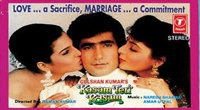
Aamne Samne (1967) Full HD Movie Download
.jpg)
Mumbai Meri Jaan Full HD Movie Download

Bandhan Kachchey Dhagon Ka Full HD Movie Download

Bheja Fry 2 Full HD Movie Download

Maa (1976) Full HD Movie Download
.jpg)
Ab Insaf Hoga Full HD Movie Download

Tum Se Achcha Kaun Hai (1969) Full HD Movie Download
.jpg)
Suhagan (1986) Full HD Movie Download
.jpg)
404 Full HD Movie Download

Yuga Full HD Movie Download

Bondhu (Bengali) Full HD Movie Download
.jpg)
Doragariki Donga Pellam Full HD Movie Download
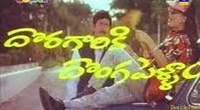
Soggadi Pellam Full HD Movie Download

Embryo Full HD Movie Download

Ayiram Poi Full HD Movie Download

Seetha Kalyanam Full HD Movie Download
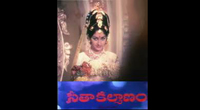
Neti Siddhartha Full HD Movie Download
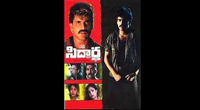
Gharana Bullodu Full HD Movie Download
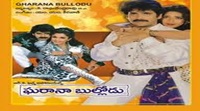
Lafangey Parindey Full HD Movie Download
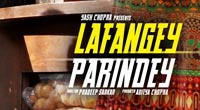
Band Baaja Baaraat Full HD Movie Download

Download latest Movie from bollywood
- 1> baaghi 3
- 2> THE SKY IS PINK MOVIE FULL STORY AND REVIEW
- 3> Luka Chuppi
- 4> TO ALL THE BOYS I’VE LOVED BEFORE
- 5> Kabir Singh
- 6> Street Dancer 3D
- 7> Simmba
- 8> Gone Girl
- 9> The Girl Who Lived
- 10> Ludo
- 11> DILWALE DULHANIA LE JAYENGE
- 12> GUILTY
- 13> The Godfather
- 14> Adventures of Rusty
- 15> Sooryavanshi
- 16> Satyameva Jayate 2
- 17> Thappad
- 18> Bhool Bhulaiyaa 2
- 19> KGFChapter 2
- 20> Mardaani 2
- 21> Pinjar
- 22> Shivaji maharaj
- 23> Ek Villian 2
- 24> Hungama 2
- 25> Divergent
- 26> Mumbai Saga
- 27> The Internship
- 28> HIT (telugu)
- 29> Panga
- 30> The perfect date
- 31> 16 December
- 32> Gopala Gopala (Telugu)
- 33> Brahmastra
- 34> Gangubai Kathiawadi
- 35> Manmadhudu
- 36> Nenu local
- 37> Mahanati
- 38> Shatamanam bavathi
- 39> Lagaan
- 40> After
- 41> MOM
- 42> Shamshera
- 43> Raguvaran BTech
- 44> Khakee
- 45> The villain
- 46> OM
- 47> Mr. perfect
- 48> Bueatifull mind
- 49> Hichki
- 50> Gabbar Singh
- 51> Jogi
- 52> Before Sunrise
- 53> Before Sunset
- 54> Before Midnight
- 55> The Big Bull
- 56> Top Gun: Maverick
- 57> The Purge
- 58> The Sky is Pink
- 59> Laxmmi Bomb
- 60> Sadak 2
- 61> Sufna
- 62> Prithviraj
- 63> PK
- 64> Coolie No 1(2020)
- 65> Black Widow
- 66> Dear Zindagi
- 67> Dil Bechara
- 68> PHIR HERA PHERI
- 69> WAR
- 70> Dostana
- 71> RRR: Roudram Ranam Rudhiram
- 72> Maidan
- 73> Dabbang 3
- 74> Chhalaang
- 75> life as we know it
- 76> SherShaah
- 77> Sandeep Aur Pinky Faraar
- 78> Event Horizon
- 79> 83
- 80> Radhe: Your Most Wanted Bhai
- 81> Gunjan Saxena: The Kargil Girl
- 82> Mr India
- 83> Vivah
- 84> Anokha Bandhan
- 85> Ghost
- 86> Bhoot: Part One - The Haunted Ship
- 87> Haseen Dilruba
- 88> Laal Singh Chaddha
- 89> Qismat
- 90> Rajput
- 91> Drive
- 92> Dil Chahta Hai
- 93> Dil Ki Baazi
- 94> Dil Ka Rishta
- 95> Teesri Manzil
- 96> Dil
- 97> Love Aaj Kal
- 98> Khaali Peeli
- 99> Bunty Aur Babli 2
- 100> Atrangi Re
- 101> Gulabo Sitabo
- 102> Jodi
- 103> Suraj Pe Mangal Bhari
- 104> Deewana
- 105> Attack
- 106> Sardar Udham Singh
- 107> Toofan
- 108> THE LOVEBIRDS
- 109> Jersey
- 110> Ginny Weds Sunny
- 111> Thalaivi
- 112> Shiddat
- 113> Angels vs Zombies
- 114> Koi Mil Gya
- 115> Thank God
- 116> Bhuj: The Pride of India
- 117> Hum Aapke Hain Kaun
- 118> The Platform
- 119> Bird Box
- 120> Roohi Afzana
- 121> Torbaaz
- 122> Nikamma
- 123> World War Z
- 124> Extraction
- 125> Train to Busan
- 126> Life of Pi
- 127> SHAADI MEIN JROOR AANA
- 128> Himmat Aur Mehnat
- 129> To All The Boys: P.S. I Still Love You
- 130> Mimi
- 131> Good Newwz
- 132> Shubh Mangal Zyada Saavdhan
- 133> Raabta
- 134> Harry Potter and the Philosopher's Stone
- 135> Harry Potter and the Chamber of Secrets
- 136> Chhapaak
- 137> War of the Worlds
- 138> Harry Potter and the Prisoner of Azkaban
- 139> Harry Potter and the Goblet of Fire
- 140> MURDER MYSTERY
- 141> Shakuntala Devi
- 142> Bachchan Pandey
- 143> Jayeshbhai Jordar
- 144> Sheer Qorma
- 145> Saina
- 146> 'O' Pushpa I hate tears
- 147> Kedarnath
- 148> MS Dhoni The Untold Story
- 149> Chhichhore
- 150> Badhaai Ho
- 151> Unstoppable
- 152> Oz the Great And Powerful
- 153> The Girl on the Train
- 154> Haathi Mere Saathi 2020
- 155> The Conjuring: The Devil Made Me Do It
- 156> Gandhi Se Pehle Gandhi
- 157> The Song of Scorpions
- 158> Srimanthudu
- 159> Hello Guru Prema Kosame
- 160> Beauty and The Beast
- 161> Black Panther
- 162> Charlie and the Chocolate Factory
- 163> Bole Chudiyan
- 164> Fidaa
- 165> Duvvada Jagannadham
- 166> Bruce Lee: The Fighter
- 167> Hyper
- 168> Yaara
- 169> Red (2020)
- 170> Shivam
- 171> That Is Mahalakshmi
- 172> Nishabdham
- 173> Aashram 2020 web series
- 174> Laxmii
- 175> Mismatched
- 176> STUDENT OF THE YEAR 2
- 177> NAIL POLISH
- 178> Ramprasad Ki Tehrvi
- 179> KAAGAZ
- 180> 12 o Clock
- 181> The Power
- 182> bolo hau
- 183> Tribhanga
- 184> JAMUN
- 185> Madam Chief Minister
- 186> Maasaab
- 187> Aadhaar
- 188> Tanhaji
- 189> Bhaagi 3
- 190> Bhootnath
- 191> MALANG
- 192> Jai Mummy Di
- 193> Haathi Mere Saathi 2021
- 194> Shakeela
- 195> Unpaused
- 196> Annayya
- 197> Vamsoddharakudu
- 198> Mrugaraju
- 199> Narasimha Naidu
- 200> Sankranti
- 201> Manasu Maata Vinadhu
- 202> Anjaane
- 203> Apaharan
- 204> Bachke Rehna Re Baba
- 205> Bewafaa
- 206> Roohi
- 207> Radhe
- 208> Zindagi Khoobsoorat Hai
- 209> Yeh Mohabbat Hai
- 210> Yeh Kya Ho Raha Hai?
- 211> The Tomorrow War
- 212> DehradunDiary
- 213> Meri Shaadi Karaoo
- 214> Matruu Ki Bijlee Ka Mandola
- 215> No One Killed Jesica
- 216> Aag Ka Goola
- 217> Eight Million Dollars
- 218> Three Hundred
- 219> Cats and Dog
- 220> Decoy
- 221> Gold Rush
- 222> You Have Got Mail
- 223> Final Destination three
- 224> Tofan
- 225> Jungle
 Story of movie H%c3%a4xan :
Story of movie H%c3%a4xan : 